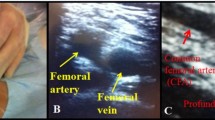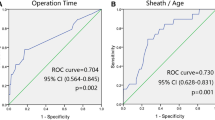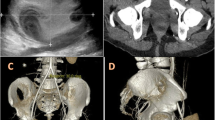Abstract
Femoral arterial access is challenging in infants. Furthermore, after cardiac catheterization, femoral arterial occlusion (FAO) can be underestimated and easily missed on physical examination. Ultrasound is recommended for femoral arterial access and the correct diagnosis of FAO; however, few studies have reported its effectiveness.To investigate the frequency and risk factors of acute loss of the arterial pulse (ALAP) and persistent femoral arterial occlusion (PFAO) in infants with congenital heart disease who underwent ultrasound˗guided femoral arterial access (US-GFAA) and were diagnosed with FAO by ultrasound.We obtained data related to patient characteristics, access variables of US˗GFAA, and ultrasonography findings of the femoral artery from our pediatric cardiac catheterization database between August 2017 and August 2022. We divided the patients into groups based on the presence of ALAP and PFAO. We identified ALAP in 99 (19%) patients and PFAO in 21(4%) of 522 patients in the study. The median patient age was 132 days (interquartile range: 75˗202 days). The logistic regression analysis identified younger age, aortic coarctation, previous catheterization of the same femoral artery, larger sheath size (5F), and longer duration of cannulation as independent risk factors for ALAP and younger age as an independent risk factor for PFAO (all p < 0.05). This study showed that younger age at procedure was a risk factor for both ALAP and PFAO, while aortic coarctation, previous arterial catheterization, use of a larger sheath and longer duration of cannulation were risk factors for ALAP in infants. The majority of FAO is reversible and secondary to arterial spasm, and the of FAO increases inversely with patient age.

Similar content being viewed by others
References
Ding L, Pockett C, Moore J, El-Said H (2016) Long sheath use in femoral artery catheterizations in infants <15 kg is associated with a higher thrombosis rate: proposed protocol for detection and management. Catheter Cardiovasc Interv 88(7):1108–1112
Rizzi M, Kroiss S, Kretschmar O, Forster I, Brotschi B, Albisetti M (2016) Long-term outcome of catheter-related arterial thrombosis in infants with congenital heart disease. J Pediatr 170:181–7.e1
Gokdemir M (2022) Cindik N (2022) Risk factors and frequency of acute and permanent femoral arterial occlusion in neonates with CHD who undergo ultrasound-guided femoral arterial access. Cardiol Young 5:1–7
Totapally BR, Raszynski A, Khan D, Amjad I, Biehler J (2019) Extremity arterial thromboses in hospitalized children: a national database analysis of prevalence and therapeutic interventions. Pediatr Crit Care Med 20(3):e154–e159
Kim J, Sun Z, Benrashid E et al (2017) The impact of femoral arterial thrombosis in paediatric cardiac catheterisation: a national study. Cardiol Young 27(5):912–917
Kamyszek RW, Leraas HJ, Nag UP et al (2019) Routine postprocedure ultrasound increases rate of detection of femoral arterial thrombosis in infants after cardiac catheterization. Catheter Cardiovasc Interv 93:4 652˗659
Kulkarni S, Naidu R (2006) Vascular ultrasound imaging to study immediate postcatheterization vascular complications in children. Catheter Cardiovasc Interv 68: 3 450˗455
Knirsch W, Kellenberger C, Dittrich S et al (2013) Femoral arterial thrombosis after cardiac catheterization in infancy: impact of Doppler ultrasound for diagnosis. Pediatr Cardiol 34: 3 530˗535
Alexander J, Yohannan T, Abutineh I et al (2016) Ultrasound˗guided femoral arterial access in pediatric cardiac catheterizations: A prospective evaluation of the prevalence, risk factors, and mechanism for acute loss of arterial pulse. Catheter Cardiovasc Interv 88(7):1098˗1107
Glatz AC, Keashen R, Chang J et al (2015) Outcomes using a clinical practice pathway for the management of pulse loss following pediatric cardiac catheterization. Catheter Cardiovasc Interv 85(1):111–117
Saxena A, Gupta R, Kumar RK, Kothari SS, Wasir HS (1997) Predictors of arterial thrombosis after diagnostic cardiac catheterization in infants and children randomized to two heparin dosages. Catheter Cardiovasc Diagn 41(4):400˗403
Kocis KC, Snider AR, Vermilion RP, Beekman RH (1995) Two-dimensional and Doppler ultrasound evaluation of femoral arteries in infants after cardiac catheterization. Am J Cardiol 75(8):642–645
Brotschi B, Hug MI, Kretschmar O, Rizzi M, Albisetti M (2015) Incidence and predictors of cardiac catheterisation˗related arterial thrombosis in children. Heart 101(12):948˗953
Roushdy AM, Abdelmonem N, El Fiky AA (2012) Factors affecting vascular access complications in children undergoing congenital cardiac catheterization. Cardiol Young 22(2):136–144
Bansal N, Misra A, Forbes TJ, Kobayashi D (2021) Femoral artery thrombosis after pediatric cardiac catheterization. Pediatr Cardiol 42(4):753˗761
Hanslik A, Kitzmüller E, Thom K et al (2011) Incidence of thrombotic and bleeding complications during cardiac catheterization in children: comparison of high-dose vs. low-dose heparin protocols. J Thromb Haemost 9(12):2353–2360
Backes CH, Cheatham SL, Deyo GM et al (2016) Percutaneous patent ductus arteriosus (PDA) closure in very preterm infants: Feasibility and complications. J Am Heart Assoc 5(2):e002923
Glatz AC, Shah SS, McCarthy AL et al (2013) Prevalence of and risk factors for acute occlusive arterial injury following pediatric cardiac catheterization: a large single˗center cohort study. Catheter Cardiovasc Interv 82(3):454˗462
Bulbul ZR, Galal MO, Mahmoud E et al (2002) Arterial complications following cardiac catheterization in children less than 10 kg. Asian Cardiovasc Thorac Ann 10(2):129˗132
Albisetti M, Rizzi M, Bonduel M, Reve˗Vilk S, Goldenberg N (2019) Recommendations for future research in catheter˗-related arterial thrombosis in children. Res Pract Thromb Haemost; 3(2):193˗196
Song IK, Choi JY, Lee JH et al (2016) Short-axis/out-of-plane or long˗axis / in˗plane ultrasound˗guided arterial cannulation in children: A randomised controlled trial. Eur J Anaesthesiol; 33(7):522˗527
Siddik-Sayyid SM, Aouad MT, Ibrahim M et al (2016) Femoral arterial cannulation performed by residents: A comparison between ultrasound˗guided and palpation technique in infants and children undergoing cardiac surgery. Paediatr Anaesth; 26(8):823˗830
Boran OF, Urfalıoglu A, Arslan M et al (2020) Effects of vascular morphological features and ultrasound˗guided vascular cannulation techniques on the success of femoral artery catheterisation in newborns. J Clin Monit Comput 34(3):607˗614
Berk D, Gurkan Y, Kus A, Ulugol H, Solak M, Toker K (2013) Ultrasound-guided radial arterial cannulation: long axis/in-plane versus short axis/out-of-plane approaches? J Clin Monit Comput Jun 27(3):319–324
Law MA, Borasino S, McMahon WS, Alten JA (2014) Ultrasound˗versus landmark˗guided femoral catheterization in the pediatric catheterization laboratory: a randomized˗controlled trial. Pediatr Cardiol 35(7):1246˗1252
Alten JA, Borasino S, Gurley WQ, Law MA, Toms R, Dabal RJ (2012) Ultrasound˗guided femoral vein catheterization in neonates with cardiac disease. Pediatr Crit Care Med13(6):654˗659
Kim ES, Sharma AM, Scissons R et al (2020) Interpretation of peripheral arterial and venous Doppler waveforms: a consensus statement from the Society for Vascular Medicine and Society for Vascular Ultrasound. Vasc Med 25(5):484–506
Bhatia N, Sivaprakasam J, Allford M, Guruswamy V (2014) The relative position of femoral artery and vein in children under general anesthesia˗an ultrasound˗guided observational study. Paediatr Anaesth;24(11):1164˗1168
Tokel K, Gümüş A, Ayabakan C, Varan B, Erdoğan I (2018) Complications of cardiac catheterization in children with congenital disease. Turk J Pediatr 60(6):675˗683
Franken EA Jr, Girod D, Sequeira FW, Smith WL, Hurwitz R, Smith JA (1982) Femoral artery spasm in children: Catheter size is the principal cause. AJR Am J Roentgenol 138(2):295˗298
Funding
This study was supported by the Baskent University Research Fund.
Author information
Authors and Affiliations
Contributions
MG Design of study, data analysis and interpretation, drafting article, critical revision of article, approval of article, statistics, data collection NC: Design of study, data analysis and interpretation, drafting article, critical revision of article, approval of article.
Corresponding author
Ethics declarations
Conflict of Interest
The authors declare no potential conflict of interest.
Additional information
Publisher's Note
Springer Nature remains neutral with regard to jurisdictional claims in published maps and institutional affiliations.
Rights and permissions
Springer Nature or its licensor (e.g. a society or other partner) holds exclusive rights to this article under a publishing agreement with the author(s) or other rightsholder(s); author self-archiving of the accepted manuscript version of this article is solely governed by the terms of such publishing agreement and applicable law.
About this article
Cite this article
Gokdemir, M., Cindik, N. Frequency and Predictors of Acute and Persistent Femoral Artery Occlusion in Infants with Congenital Heart Disease: A Study Using Ultrasonography for Arterial Access and the Diagnosis of Arterial Occlusion. Pediatr Cardiol 44, 1191–1200 (2023). https://doi.org/10.1007/s00246-023-03180-3
Received:
Accepted:
Published:
Issue Date:
DOI: https://doi.org/10.1007/s00246-023-03180-3




